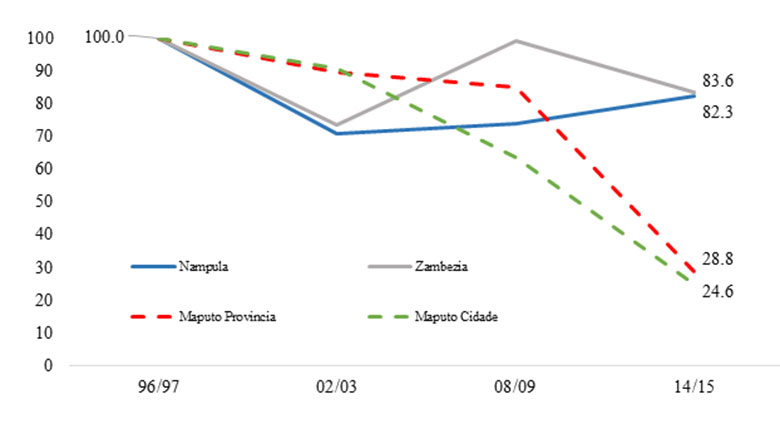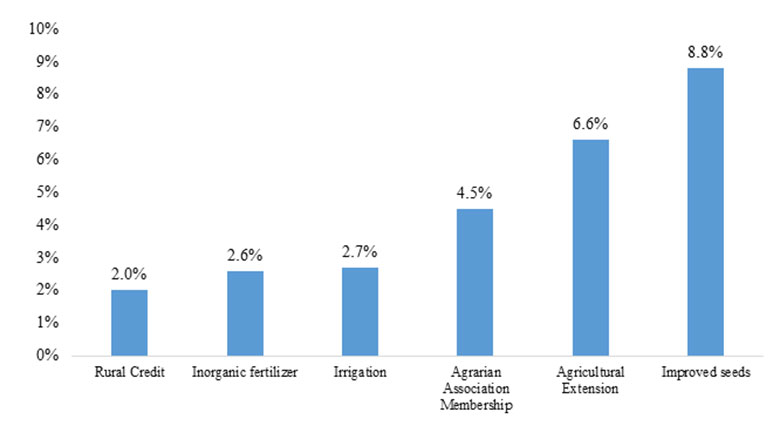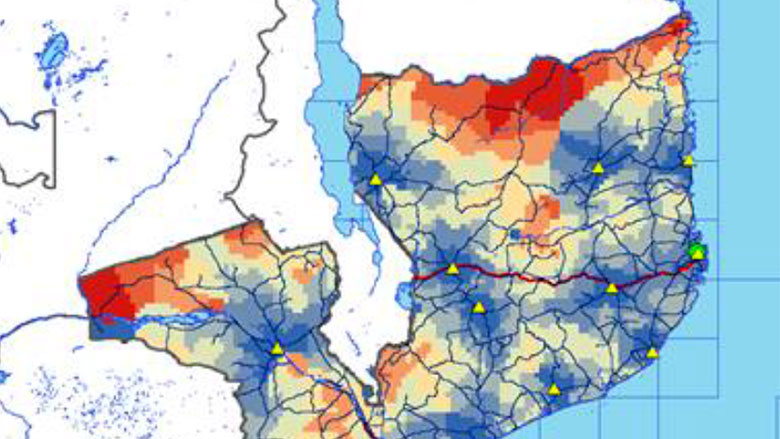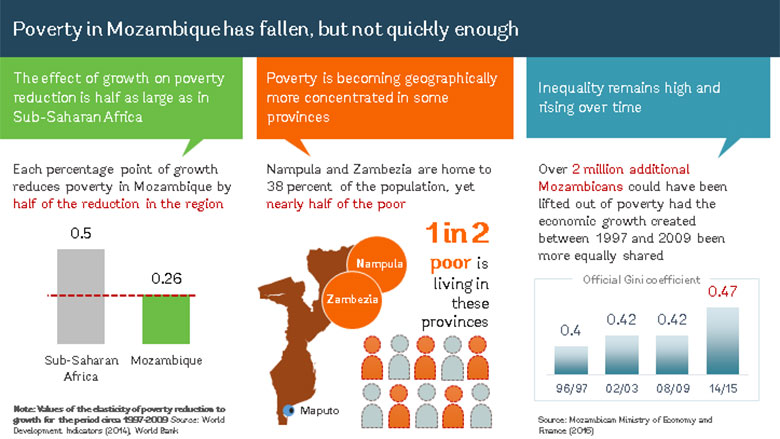MAPUTO, December 21, 2016 – Poverty in Mozambique has fallen but not nearly quick enough, according to a new World Bank report. Official data shows that poverty fell from 69.7% in 1996 to 46.1% in 2015 but for each percentage point of economic growth between 1996 and 2009, poverty only reduced by 0.26 percentage points. This is nearly half as fast as what Sub-Saharan Africa has achieved relative to the same level of growth (0.5 percentage points).
The report – Accelerating Poverty Reduction in Mozambique: Challenges and Opportunities – notes that while poverty reductions have been modest, not everyone is benefitting equally. Inequality remains high and has reduced the potential for economic growth to generate significant gains in reducing poverty. More than two million Mozambicans could have been lifted out of poverty had the economic growth created between 1997 and 2009 been more equally shared.
Additional findings of the report:
- Poverty remains much higher in rural areas and is becoming geographically concentrated in some provinces. Contrary to national trends, poverty increased in the 2000s in Zambezia, Sofala, Manica, and Gaza. Jointly with Nampula, these provinces account for 70% of the poor, up from 59% in 2002-03. Especially, Zambezia and Nampula are home to 38% of the population, yet nearly half of the poor live in these two provinces.

Note: Y-axis is an index for the poverty rate (1996/97 = 100)
Source: Mozambican Ministry of Economy and Finance (2016)
- Most of the population is disconnected from the growth process and low accessibility to and participation in markets explain up to 70% of the differences in changes in poverty rates between the lagging provinces and the rest of the country. Lack of access to basic services, ability to invest in human and physical capital, access to markets and economic opportunities constrains most of the population to contribute to and benefit from economic growth. In 2014-15, more than half of the people aged 20 to 30 years in the poorest provinces are illiterate. Only 8% and 4% of rural households have access to electricity and sanitation, respectively. Even when Mozambicans in the more isolated areas such as Nampula and Zambezia have managed to accumulate physical and human capital at a faster pace, they are unable to put them to good use and earn fair returns.
- The vast majority of the population and almost all of the rural poor work in agriculture. Higher productivity and better connection to markets can lead to real improvements in poor people’s livelihoods. Agriculture’s potential to drive poverty reduction is dampened due to low productivity, (maize yields average one ton per hectare compared to 3.8 in South Africa and 2.2 in Malawi), low utilization of inputs and technology (less than 3% of farmers use fertilizers), and limited connectivity and commercialization (eight in 10 farmers are disconnected from reliable all-weather road networks and do not sell part of their production). A Mozambican farmer that employs fertilizers can profit from yields that are up to 40% higher compared to a farmer that doesn’t. Similarly, farmers that sell part of their produce, on average, record yields that are 25% higher relative to those engaged in subsistence farming.

- Accelerating poverty reduction also requires protecting vulnerable populations from the effects of extreme weather. Three in four farmers in Mozambique report losing part of their crops, animals or other equipment due to climatic shocks. A child born in a place affected by severe floods, like the ones that hit the country in 2000, is more likely to be undernourished, drop out of school, and not participate in the labor market later in life than a child raised under normal weather conditions.

